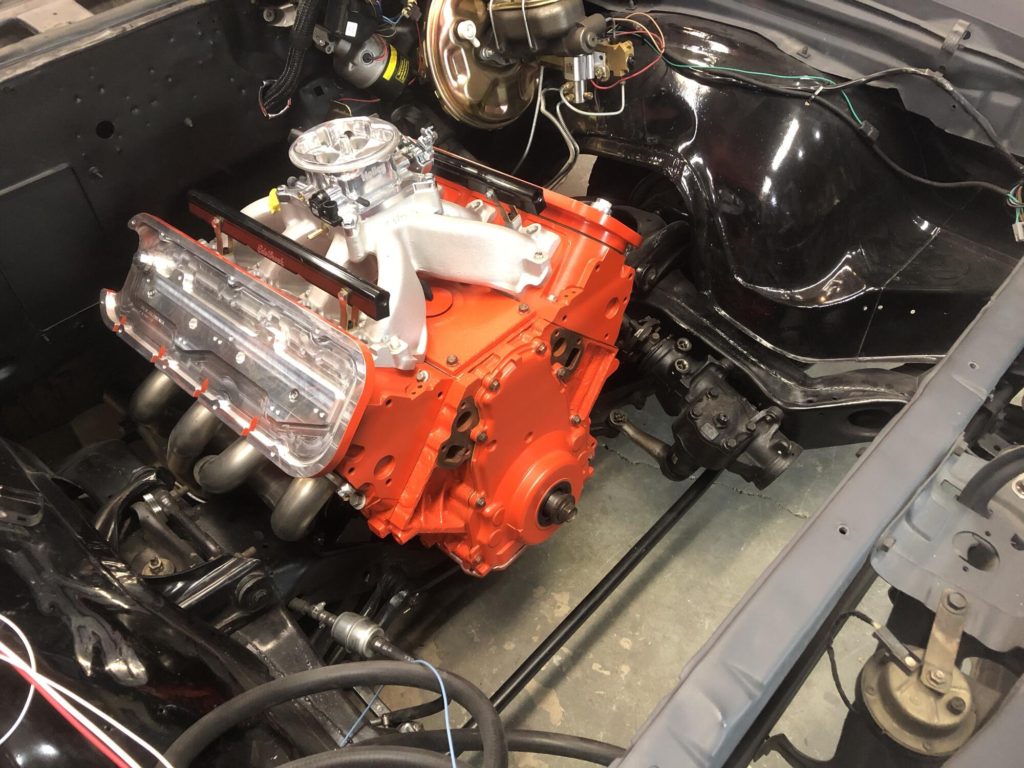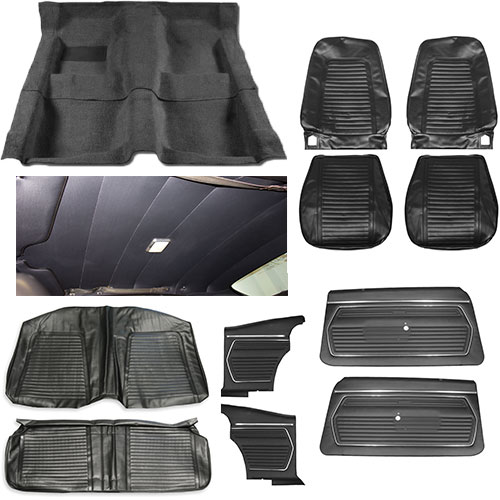
G-Body Engine Swap Guide: 305 Out, 350 or LS In
GM G-body cars (1978–1988) were built with classic style, but most left the factory with the underwhelming 305 small-block. Swapping in a 350 SBC or
Restoring a classic American muscle car is a rewarding project that connects car enthusiasts with a nostalgic era of automotive performance and design. These iconic vehicles from the 1960s and 1970s are symbols of power, speed, and a love for the open road. However, bringing a vintage muscle car back to life often involves replacing worn-out or outdated components.

The heart of any muscle car is its engine. Over time, engine blocks can suffer from wear and tear, leading to issues such as decreased compression, oil leaks, and reduced performance. During a restoration, it’s common to replace or rebuild the engine block and cylinder heads to restore the vehicle’s power.
Classic muscle cars often feature carburetors, which can become clogged or worn out. Modern restorations may involve replacing the carburetor with a more efficient fuel injection system, but maintaining the original carburetor can preserve the car’s authenticity.
The exhaust system, including the mufflers, can be rusty and have holes in them. Rust and corrosion are common issues, that require replacement.
Whether it’s a manual or automatic transmission, they are essential for transferring engine power to the wheels. Over time, gears can wear down, and seals may leak, making replacement necessary.
The driveshaft transmits power from the transmission to the rear differential. Worn universal joints can lead to vibrations and noise, often requiring replacement to maintain smooth operation. Differentials, or Rear Ends, can have bad bearings, worn gears, or leaks of their own.

The braking system is critical for safety. Brake pads and rotors wear out with use and need regular replacement to ensure effective stopping power.
Brake lines can corrode and hoses can crack, leading to brake fluid leaks and reduced braking performance. Replacing these components is essential for a reliable braking system.
The master cylinder and brake booster are vital to the brake system’s functionality. Replacing them ensures that brake pressure is maintained for safe and effective braking.

Suspension components such as shock absorbers and springs wear out over time, affecting ride quality and handling. Replacing these parts can restore the car’s ride quality.
Control arms and bushings connect the suspension to the cars frame. Worn bushings can lead to a rough ride and poor handling, making their replacement crucial for a smooth driving experience.
Steering components, including the steering box and tie rods, are important to keep the car going where you want. Replacing worn parts is necessary to ensure precise and safe steering.

Electrical systems in classic cars often suffer from brittle and corroded wiring, leading to unreliable performance. Replacing the wiring harnesses can prevent electrical issues and improve reliability.
The alternator and starter motor are critical for starting the engine and maintaining battery charge. Replacing these components ensures reliable starting and electrical system performance.
Replacing outdated or damaged lighting and instrumentation is important for safety and functionality. Modern equivalents can offer improved visibility and reliability while maintaining a classic look.

Interior components such as upholstery and carpeting often show signs of wear and tear. Replacing these can enhance the car’s aesthetic appeal and comfort.
The dashboard and interior trim may suffer from cracks, fading, or damage over time. Replacing or restoring these elements can significantly improve the interior’s appearance.
A worn steering wheel and pedal pads can detract from the driving experience. Replacing these items can restore the car’s interior to its former glory.

Body panels and exterior trim are often replaced to address rust and damage. Replacing or restoring these parts is essential for a polished, like-new appearance.
Over time, glass can become scratched and weatherstripping can deteriorate, leading to leaks and noise. Replacing these components ensures a weather-tight and visually clear vehicle.
Replacing old wheels and tires is crucial for both safety and performance. New tires provide better grip and handling, while updated wheels can enhance the car’s overall look.
Restoring a classic American muscle car is a journey that involves dedication, patience, and a fair amount of elbow grease. The list above might be a bit overwhelming; your first step should be to assess each part or system and determine if they need to be replaced or not. If you do find something that needs to be replaced, hop on SS396.com for your replacement parts or give our friendly techs a call at (203) 235-1200!

GM G-body cars (1978–1988) were built with classic style, but most left the factory with the underwhelming 305 small-block. Swapping in a 350 SBC or

Charlie’s 1965 Chevelle was originally born in the Kansas City factory and delivered to Portland, Oregon, as an SS 327 with a bench seat and

The rivalry between Ford and Chevy is as old as time, and the rivalry between Camaro and Mustang is almost as old. What began as